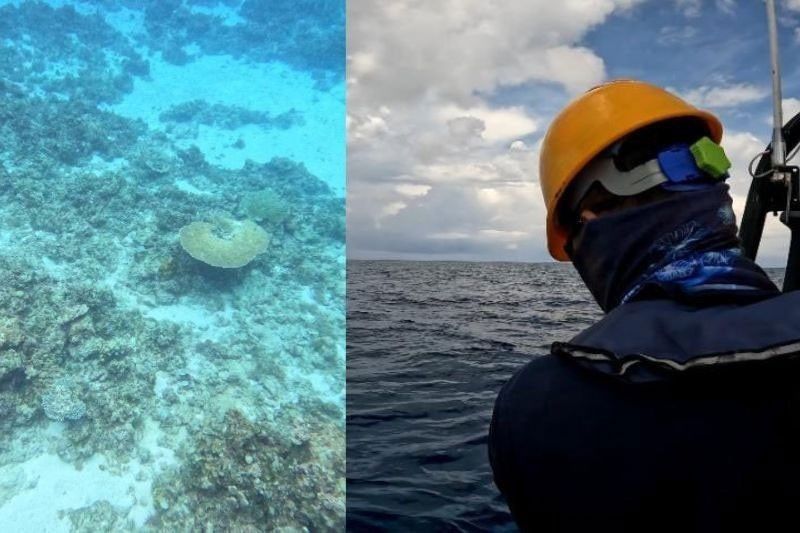From ripples to waves: Protecting our marine biodiversity heritage through synergies

Leading up to September as the Maritime and Archipelagic Nation Month (MANA Mo) pursuant to Proclamation 316, series of 2017, and World Maritime Day on the 26th, the immense value of the manifold marine biodiversity in our territorial sea of 679,800 square kilometers comes to the fore.
With the Philippines, particularly the Verde Island Passage Marine Corridor being referred to as the center of the center of marine shore fish biodiversity, it is the 11th largest producer of fish and fish products globally. Marine resources are also key to the country’s food security: if kanin (rice) is life, then fish and fish products certainly make Filipinos’ lives sweeter and more robust for being the highest source of animal protein meat.
Moreover, according to the DOST, the Philippines’ coral reef area which spans 26,000 square kilometers – the second largest in Southeast Asia – is home to over 500 coral species, several of which are endemic.
Its coastal and marine ecosystems are vital to migratory species that are not limited to sea life such as whales, sharks, turtles, and dolphins but also include waterbirds that rely on the ecological connectivity of these habitats for breeding and nesting, as they traverse across the Russian Far East and Alaska, East Asia and Southeast Asia, to Australia and New Zealand.
The Stratbase ADR Institute hosted a forum titled "Coral Reefs & Currents: Prioritizing Marine Conservation in the West Philippine Sea" on Aug. 27, 2024, at the Asian Institute of Management.
The event emphasized a comprehensive approach to marine biodiversity conservation. Dr. Dexter dela Cruz from Southern Cross University, Australia, discussed innovations in coral breeding to "future-ready" reefs against threats like destructive fishing and coral bleaching.
Ms. Lea Avilla of the Biodiversity Management Bureau (BMB) outlined government strategies for marine resource protection, highlighting the Coastal and Marine Ecosystems Management Program and noting that 1.42% of the Philippines' sea area is now designated as Marine Protected Areas (MPAs).
Dr. Maria Vanessa Baria-Rodriguez of the UP Marine Science Institute detailed a multi-stakeholder coral reef restoration project in Iba, Zambales, funded by the Australian Embassy.
Indeed, addressing the triple planetary crisis of biodiversity loss, climate change, and pollution, and an array of other cross-cutting issues require synergies among policies, as well as initiatives among the public and private sectors, the academe, indigenous peoples and local communities, partners, and the international community.
Included in these collective efforts is the Philippines’ commitments under multilateral environmental agreements (MEAs), such as the Convention on Biological Diversity (CBD), the UN Framework Convention on Climate Change (UNFCCC), the Convention on Migratory Species (CMS), the Convention on the International Trade in Endangered Species of Wild Flora and Fauna (CITES), and the Convention on Wetlands of International Importance. These MEAs have distinct but intertwined objectives, just like the ecosystems that they seek to protect.
The Kunming-Montreal Global Biodiversity Framework, or the Biodiversity Plan is the most recent expression of the synergies that are required, if our shared vision to live in harmony with nature by 2050 is to come into fruition, through the achievement of its 4 long-term Goals, and the accomplishment of its 23 Targets by 2030.
The first three goals embody the objectives of the CBD – the conservation and sustainable use of biodiversity, and the fair and equitable sharing of benefits from the utilization of genetic resources – while fourth seeks adequate means of implementation of the Biodiversity Plan.
Integral to the latter is the equitable access by all Parties to the CBD, especially by developing States such as the Philippines, of financial resources, capacity-building, technical and scientific cooperation, and access to and transfer of technology.
The realization of these Goals is contingent on progress in reaching the Targets. Of particular importance are Target 3 or the 30x30 Target that seeks the effective conservation and management of at least 30% of land, waters and seas; Target 8 on minimizing the impacts of climate change and ocean acidification through nature-based solutions and ecosystem-based approaches; and Target 7 on reducing pollution from all sources. Moreover, the Biodiversity Plan engenders policymaking that is backed by the best available science, an inclusive and rights-based implementation, and the mainstreaming of biodiversity into various sectors.
The Philippines is taking strides toward the right direction with the passage of the Philippine Ecosystem and Natural Capital Accounting System (PENCAS) Act, which institutionalizes the valuation of environmental assets and biodiversity in the country’s economic accounting framework, while recognizing the intrinsic value of nature.
Additionally, the Securities and Exchange Commission has issued guidelines on blue bonds for financing eligible projects relating to coastal, marine, and water ecosystems and resources. The Philippines has also signed – but has yet to ratify – the Agreement under the United Nations Convention on the Law of the Sea on the Conservation and Sustainable Use of Marine Biological Diversity of Areas beyond National Jurisdiction (BBNJ Agreement).
Despite the rising geopolitical tensions at the West Philippine Sea, perhaps various avenues remain open for amity and cooperation – if only to reduce the degradation of the marine environment and the risk of biodiversity depletion – by buoying up synergies among domestic policies and efforts, MEAs, and the impetus of the Biodiversity Plan. As an archipelagic nation, our coastal and marine biodiversity is part of every Filipino’s heritage, ang mana mo at nating lahat.
--
Mary Kristerie A. Baleva is a lawyer with a master's degree and a PhD in international human rights law, who served as the director for International Affairs and Treaties of the ASEAN Centre for Biodiversity, and the DENR's OIC assistant secretary for Legal and Legislative Affairs. She is also a non-resident fellow of think tank Stratbase ADR Institute.
- Latest



























